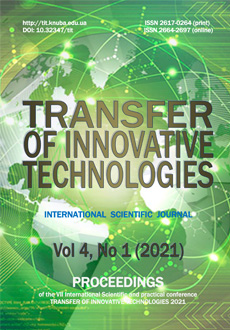Reinforcement of metal structures by external reinforcement by gluing high-strength fiber-reinforced systems: analytical approach
DOI:
https://doi.org/10.32347/tit2141.0101Keywords:
композитні матеріали, фіброармовані системи, дефекти, пошкодження, реконструкція, підсилення металевих конструкцій, реконструкція армований волокном полімер FRPAbstract
Ukraine's construction heritage includes numerous examples of the use of metal structures, especially those used in industrial buildings and high-span structures. The use of metal structures in construction is due primarily to their mechanical properties. They are frost-resistant and can withstand temperatures down to -65 degrees, hard, durable, strong and reliable. They can also be used in areas with high seismic activity. But, as in the case of other types of structures, there is a need to restore or strengthen metal structures due to structural defects, wear of load-bearing elements, as well as to increase the load-bearing capacity. In some cases, reinforcement with fiber-reinforced polymer composites (FRP) gives a better result compared to traditional methods of reinforcement using metal
References
I.N. Rudnieva. (2020) Comparative analysis of strengthening of building structures (masonry, metal structures, reinforced concrete) using FRP materials and traditional methods during reconstruction. Strength of Materials and Theory of Structures, 105, 267-291. https://doi.org/10.32347/2410-2547.2020.105.267-291
М.В. Прядко, І.М. Руднєва, Ю.М. Прядко. (2018) Обстеження та підсилення будівельних конструкцій промислових будівель: Навчальний посібник, Київ: КНУБА, 332.
І. Руднєва, Ю. Прядко, М. Прядко, Г. Тонкачеєв (2020). Особливості та перс-пективи використання технологій підси-лення будівельних конструкцій компози-ційними матеріалами при реконструкції споруд. Збірник наукових праць Будівель-ні конструкції. Теорія і практика, 7, 12-22. DOI:10.32347/2522-4182.7.2020.12-22.
Downloads
Published
How to Cite
Issue
Section
License

This work is licensed under a Creative Commons Attribution-NonCommercial-NoDerivatives 4.0 International License.
Our journal abides by the CREATIVE COMMONS copyright rights and permissions for open access journals.
Authors, who are published in this journal, agree to the following conditions:
1. The authors reserve the right to authorship of the work and pass the first publication right of this work to the journal under the terms of a Creative Commons Attribution License, which allows others to freely distribute the published research with the obligatory reference to the authors of the original work and the first publication of the work in this journal.
2. The authors have the right to conclude separate supplement agreements that relate to non-exclusive work distribution in the form in which it has been published by the journal (for example, to upload the work to the online storage of the journal or publish it as part of a monograph), provided that the reference to the first publication of the work in this journal is included.




